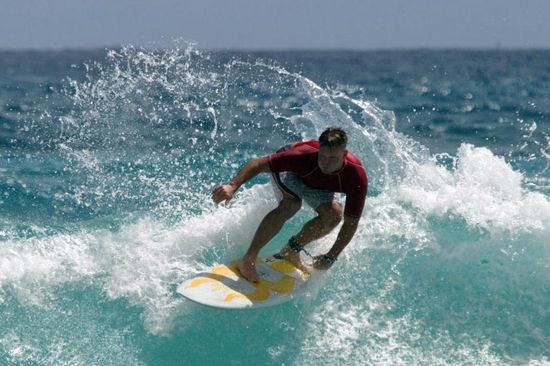Dude, You Need to Raise Money: A Look at Surfrider's Revenue Model
/
The Surfrider Foundation was started more than three decades ago by a handful of Malibu surfers who saw the coast they loved threatened by pollution and development. These days, it has 85 chapters around the country, and in a recent year, pulled in over $5 million in contributions and grants.
Those aren't huge numbers compared to many nonprofits we look at, but we're talking about a group started by California surfers, don't forget. Clearly, the people behind Surfrider aren't too laid back. It's not easy raising five million bucks a year.
So how does Surfrider do it? We put that question to Nancy Eiring, the group's director of marketing and engagement.
Eiring pointed first and foremost to how passionate people get about "protecting their coast in their backyards," noting that Surfrider oversees "the single largest network of coastal defenders who are volunteers." She notes: "We are the only environmental organization that is focused on our coast."
Surfrider has parlayed that dominant position into a nonstop series of local campaigns that draw media, new members and money. "At any given point, we have more than 90 campaigns happening," Eiring said. "They range from plastic bag bans to beach access."
You can see how these issues can get people riled up. Eiring called my attention to a 2016 study that concludes the world’s oceans will be hold more discarded plastic than fish when measured by weight by the year 2050. “Working to rid our oceans of plastic is something we are are very dedicated to," Eiring said. Surfrider has been on this issue for years, but only more recently has it started to penetrate into mainstream consciousness.
Related: A Top Conservation Funder Shifts to Give New Attention to Fisheries and Plastic Trash
Regarding fundraising, Eiring said, “We are like many nonprofits, we have a diverse portfolio of funding.” One key source of support is grants from foundations.
Surfrider pulls in major grants from the Gordon and Betty Moore Foundation and the David and Lucile Packard Foundation—two of the biggest players in ocean conservation. It's also gotten support from the Marisla Foundation, which is underwritten with oil wealth and based in Laguna Beach, and a wide ranger of smaller family foundations.
Then there are Surfrider's members.
"We have a membership support base of 25,000 active members who contribute annual renewals to Surfrider of $25 or more," Eiring said. There's always an effort to move members upward, and Surfrider has a number of major donors who make gifts of $1,000 or more.
“Fifty percent of our membership revenue comes from online, from emails and the website, while the other 50 percent comes from direct mail from our annual renewals and appeals for additional gifts," Eiring says. She adds that Surfrider's direct mail program to acquire new members started in June of last year.
Corporate partnerships are another piece of the puzzle. Barefoot Wine has now supported Surfrider Foundation for more than two decades. This year will mark the 10th year of the Barefoot Wine Beach Rescue Project, when it will host thousands of volunteers who will pick up tons of beach trash to keep America’s coast “Barefoot Friendly.” This is another example of a corporation aligning itself with a charity to improve its image while supporting the nonprofit’s work.
Events figure in the fundraising mix, too.
Last year, Surfrider launched its branded event, "Two Coasts: One Ocean," in Montauk and and Malibu. Although these are fundraising galas, don’t expect to see black ties. The garb is casual. They are both held at private residences featuring food, entertainment, and fundraising auctions.
What advice would Eiring give to other nonprofits? “I think it’s all about being authentic to your DNA and not trying to be something that you are not," she said. "In order to fund raise, you have to connect with people where they’re at and you have to make the appeal emotional and tangible. You have to build for the future and not rely on your laurels of yesterday.”
Related: Everyone Can Relate to Kids." Funding a Push Against Childhood Hunger








